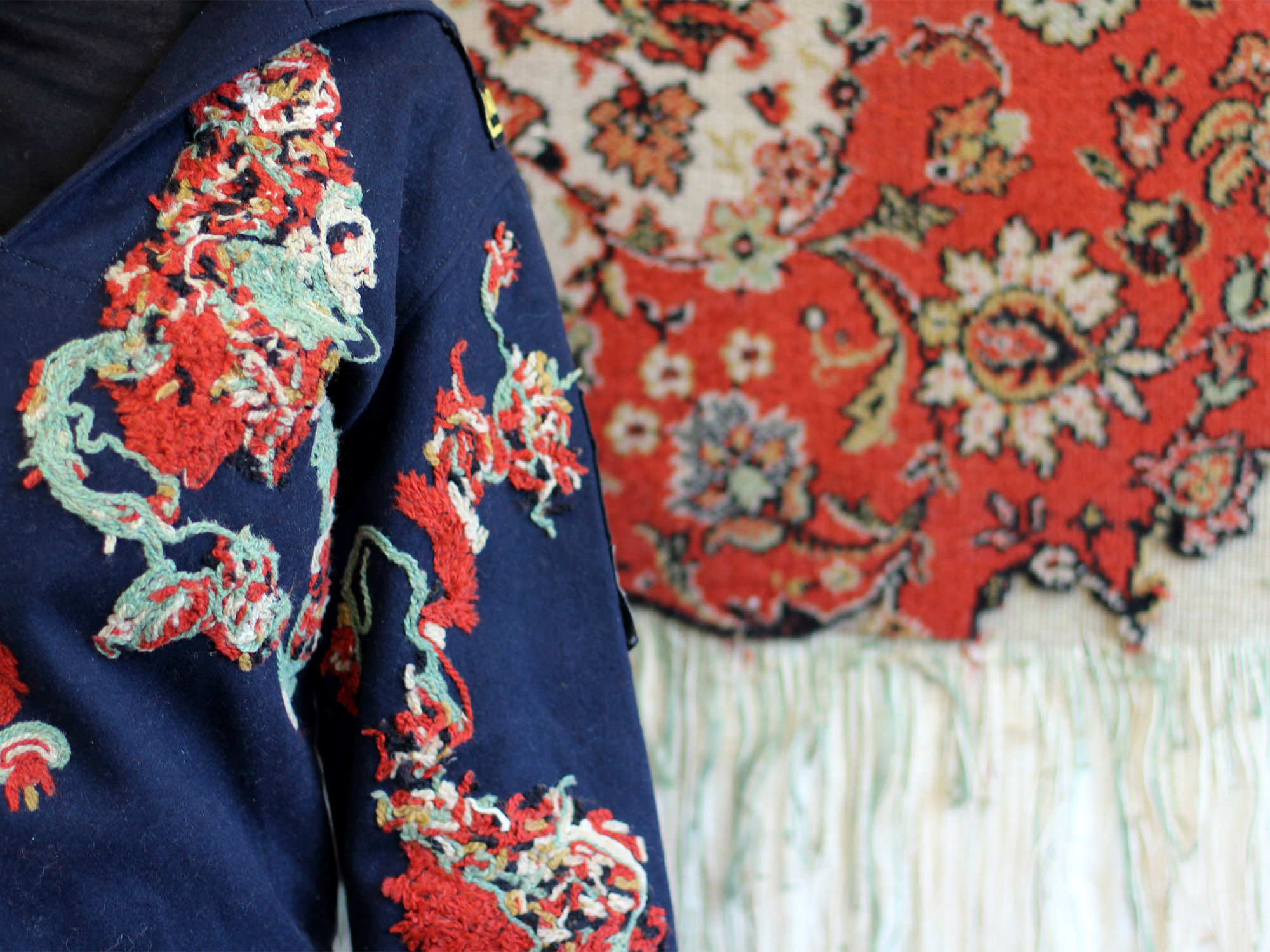
MARCH 10-25
Whether as clothing or elements of the interior décor, textile has always enjoyed a particular closeness to the human body, sharing overlapping lifespans with its users as a material witness to an individual’s life. Perhaps it is for this aspect that nearly everyone can think of at least one such item, which may have long since lost its practical function, but remains difficult to toss out, if only for all the emotions and memories associated with it.
Elena Redaelli’s practice picks up on these associative properties of textiles and the various processes of working with fabrics. An artist-nomad, Redaelli spent most of her life in her homeland of Italy, then moved to the north of Europe, where she lived for five years in Norway, before departing for Asia, where she has been traveling recently, participating in festivals and artist residencies in China, Taiwan, Australia. Her most meaningful projects engage with the local audience, fostering the kinds of dialogues and interactions only possible within a collective. In this spirit of collaboration, Redaelli shares authorship of her works with everyone who contributes to the process of their creation.
Redaelli’s site-specific sculpture and installations are created through sustained engagement with both the place (environmental art) and the community (workshops & programming). As the ZARYA artist residency is based on the grounds of a former garment factory, the artist decided to use the opportunity to reflect on used fabrics found in Vladivostok. While artifacts from the building’s past no longer exist, the factory still maintains an archive of documentation and photographs. In this sense, the artist’s project offers a symbolic return to the memory of the site.
“Unravelled Backgrounds” centers on the processed and modified surface of the carpet, divided into several sections. The lower third of the carpet consists of unwoven threads, revealing the structure of the weaving and thus hinting at the traces of the intricate labor invested into the production of each interior object – even those produced on a mass scale. The artist left the central section untouched in order to emphasize the original Middle Eastern-inflected pattern around the edges. The upper section is comprised of a mosaic of the patches produced by participants in Redaelli’s textile processing workshops, conducted weekly at the artist residency this past month. Each of the elements produced is accompanied by personal stories or comments from the participants. The display also includes the found uniform of a student of the Maritime Academy, embellished with threads of the carpet using a felting technique.
The artist found her inspiration for this project in photographs of the interiors of Soviet homes. Carpets, which were churned out in mass quantities by the factories of the Southern Republics of the USSR, covered not only to the floors of Khrushchyovka apartments typical of the Post-War period, but also the walls, where they were strung up like tapestries. Beside the utilitarian functions of insulation and soundproofing, these carpets wielded a symbolic value, as objects indicative of the household’s financial status. Even though today these carpets are considered horrifically outdated and kitschy, for the majority of people living in Russia, these elements of the interior are still identified as the quintessential backdrops of one’s day-to-day routines.
Redaelli turns to textiles and fabrics first and foremost for the rich emotional associations inherent to used, worn or outdated materials. Within her projects, personal narratives – both those shared by her collaborators and those that will never be told – become the threads, comprising the canvas of human history.
The ZARYA artist residency would like to extend its gratitude to the Vladivostok-based “Fashion Foolish,” an initiative that collects used clothing and textile materials for the further distribution and use in art and design projects, for its invaluable help in gathering materials.
For Reference: Elena Redaelli was born in Italy in 1981. She currently lives and works in Norway. In 2005, she graduated from the Academy of Fine Arts in Rome, Italy, where she majored in sculpture. Among recent personal exhibitions are WEAVING A BETTER FUTURE, WAB and Red Gate Gallery, Beijing, PRC (2017); VESTIGE, Upper Ray Gallery, Treasure Hill, Taipei, Taiwan (2017); and FADEN WERK, Kunstverein in Bad Godesberg, Bonn, Germany (2016). She has participated in group exhibitions including the Guandu International Nature Art festival, Taipei, Taiwan (2016); the International Forest Art path, Darmstadt, Germany (2016); RES-ART TRAME D'AUTORE, Imbiancheria del Vajro, Turin, Italy (2016); and the Biennale Giovani Monza, Villa Reale Monza, Italy (2013).